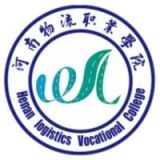How can I conduct surveys and interviews effectively and what are the best practices for data analysis?

Surveys
1. Define your target audience and objectives:
- Identify the specific group of people you want to survey.
- Determine the purpose of the survey, what information you want to collect, and how you want to use the results.
2. Develop a survey instrument:
- Create a questionnaire or survey form that covers the key topics you want to explore.
- Use clear and concise language, and ensure the questions are specific and relevant.
3. Choose a survey method:
- Surveys can be conducted online, in person, or through phone interviews.
- Select the method that best suits your target audience and objectives.
4. Administer the survey:
- Distribute the survey through appropriate channels, such as email, postal mail, or online platforms.
- Ensure the survey is anonymous and confidential.
5. Collect and analyze the data:
- Collect all survey responses and store them securely.
- Clean and organize the data, and identify patterns and trends.
- Use statistical software or manual methods to analyze the data.
Interviews
1. Prepare an interview guide:
- Develop a structured conversation guide that covers the topics you want to discuss.
- Use open-ended questions to encourage detailed responses.
- Set a time limit for the interview and stick to it.
2. Conduct the interview:
- Meet the interviewee in a neutral and comfortable setting.
- Actively listen to the interviewee's responses and ask follow-up questions.
- Use nonverbal cues to maintain engagement and build rapport.
3. Transcribe the interview:
- Record the interview in a clear and concise manner.
- Transcribe the audio or video recording into text format.
4. Analyze the data:
- Transcribe the interview into a written report.
- Identify key themes and patterns from the responses.
- Use coding or other data analysis techniques to organize and summarize the data.
Best practices for data analysis
- Data cleaning: Remove any errors, inconsistencies, or missing values from the data.
- Data validation: Check the accuracy and completeness of the data.
- Data aggregation: Combine data from multiple sources into a single dataset.
- Data visualization: Create charts, graphs, or other visual representations to identify patterns and trends.
- Data interpretation: Draw meaningful conclusions from the data analysis.
-
Data communication: Communicate the results of the data analysis to stakeholders in a clear and concise manner.




















































































































